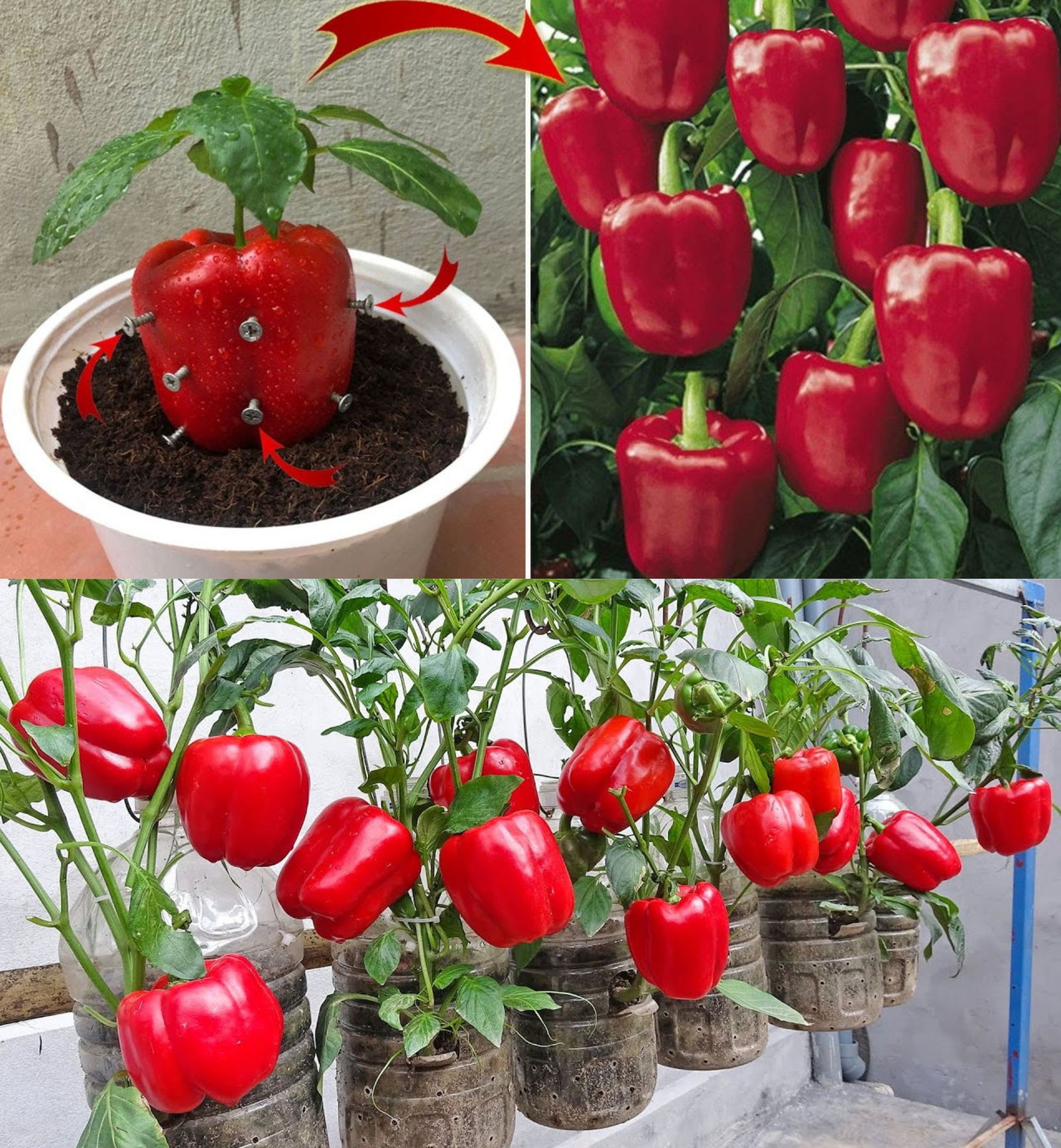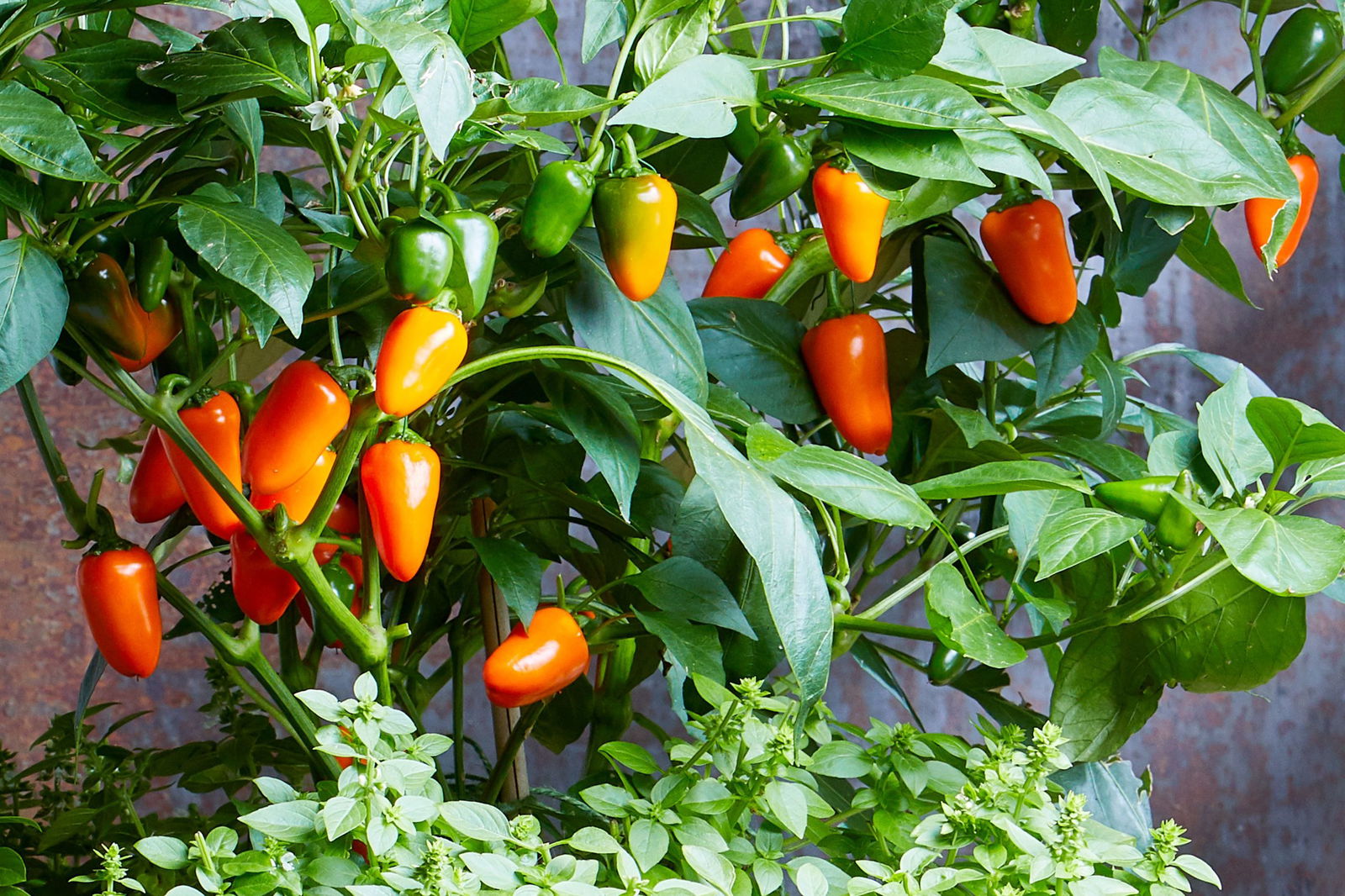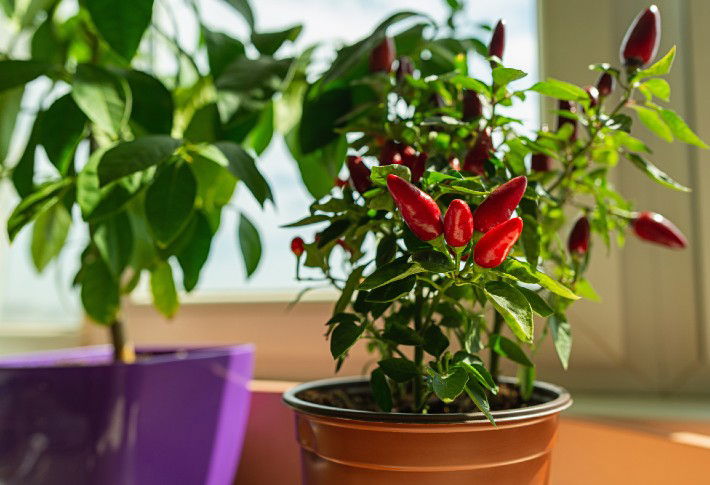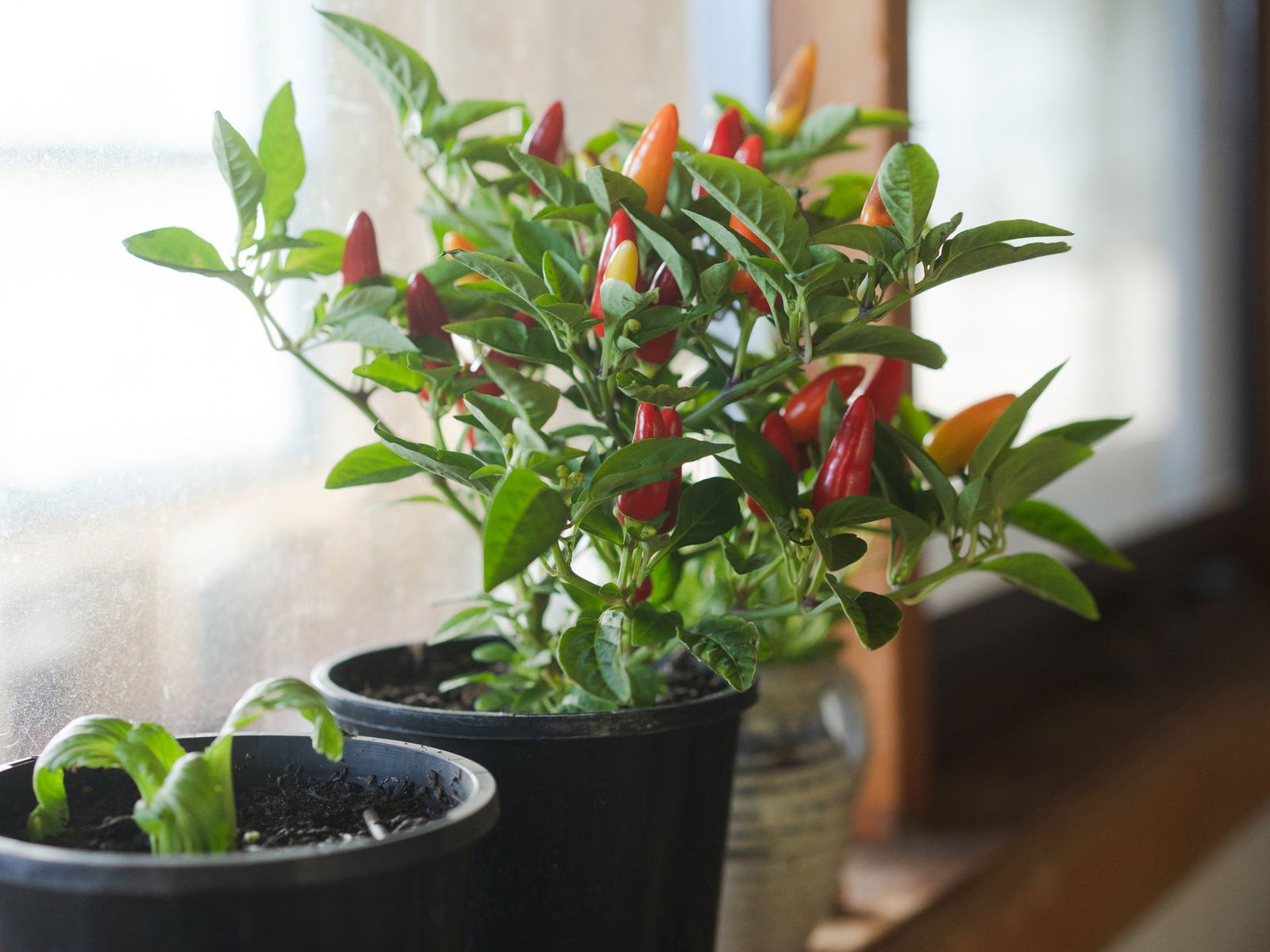
Cultivating peppers indoors can be a satisfying endeavor, enabling you to savor fresh peppers throughout the year, irrespective of outdoor weather conditions.
Here are 12 tips to help you successfully grow peppers indoors:
Choose the Right Pepper Varieties:
Opt for pepper varieties that are suitable for indoor cultivation. Compact and dwarf varieties are particularly ideal, as they demand less space and thrive well in container gardening setups.
Provide Adequate Light:
For optimal growth indoors, peppers require ample light. Position them in a sunny spot receiving a minimum of 6-8 hours of direct sunlight each day. In cases of inadequate natural light, consider supplementing with grow lights or fluorescent tubes specifically designed for plant cultivation.
Use Quality Soil:

Utilize well-draining potting soil enriched with organic matter, preferably a mix tailored for vegetables or peppers. Verify that the soil pH falls within the range of 6.0-6.8 for optimal growth.
Choose the Right Containers:
Opt for pots or containers with effective drainage to prevent overwatering. Ensure that the containers have sufficient size to accommodate the mature dimensions of the pepper plants.
Maintain Proper Temperature:
Maintain an indoor temperature ranging between 70-85°F (21-29°C) during the day and approximately 60-70°F (15-21°C) at night for optimal conditions.
Water Appropriately:

Allow the top inch of the soil to dry out before watering. Overwatering can lead to root rot, so be cautious not to keep the soil too wet.
Fertilize Regularly:
Peppers have a high nutrient demand. Apply a balanced, water-soluble fertilizer every 2-3 weeks throughout the growing season. Scale back on feeding during winter when growth rates diminish.
Prune and Pinch:
Trim your pepper plants to promote denser growth and improved air circulation. Pinch off the tips of young plants to stimulate branching.
Provide Support:
To prevent pepper plants from bending or breaking due to the weight of fruit, employ stakes or small trellises for support as they grow.
Pollinate if Necessary:

Indoor peppers may need help with pollination since there are no outdoor pollinators. Gently shake the plants or use a small brush to transfer pollen between flowers.
Watch for Pests and Diseases:
Keep an eye out for common indoor garden pests like aphids, spider mites, and whiteflies. Treat infestations promptly with organic insecticides or neem oil.
Be Patient:
Pepper plants can take several months to produce ripe fruit. Be patient and provide consistent care to ensure a bountiful harvest.
Keep in mind that the cultivation of indoor peppers might involve some experimentation to determine the optimal conditions for your particular setting and types of peppers. By exercising patience and closely following these suggestions, you can relish in homegrown peppers consistently throughout the year.
Source: Garden Growth Tips



















